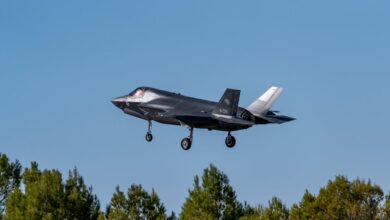Gemini Robotics 1.5: DeepMind’s ER↔VLA Stack Brings Agentic Robots to the Real World

Gemini Robotics 1.5: DeepMind’s ER↔VLA Stack Brings Agentic Robots to the Real World
Estimated Reading Time: 7 minutes
- Agentic Robotics Breakthrough: Gemini Robotics 1.5 introduces an ER↔VLA architecture (Embodied Reasoning and Vision-Language-Action) enabling robots to perform complex, multi-step tasks autonomously in real-world environments.
- Modular Design for Enhanced Capabilities: The system decouples high-level planning (ER 1.5, accessible via Gemini API) from low-level execution (VLA 1.5 controller), significantly improving reasoning, planning, and error recovery.
- Groundbreaking Motion Transfer: A unified motion representation allows skills learned on one robot platform to be *zero-shot transferred* to entirely different robot embodiments, drastically reducing data requirements and accelerating deployment.
- Quantified Real-World Performance: DeepMind’s testing demonstrates clear advantages in instruction following, generalization, cross-robot skill transfer, and long-horizon task completion, validating the system’s efficacy.
- Commitment to Safety and Accessibility: The system incorporates layered safety controls, expanded evaluation suites, and offers clear pathways for developers and partners to engage with advanced agentic robotics.
- The ER↔VLA Architecture: A New Paradigm for Embodied Intelligence
- Unlocking Versatility: Motion Transfer Across Heterogeneous Robot Platforms
- Quantifying Progress: Real-World Performance and Agentic Gains
- Real-World Example: Intelligent Waste Sorting
- Safety, Accessibility, and the Road Ahead for Agentic Robotics
- Take the Next Step: Activating Agentic Robotics
- Conclusion
For decades, the promise of intelligent robots operating autonomously in complex, unpredictable environments remained largely in the realm of science fiction. Conventional robotics often struggled with the nuances of real-world tasks, requiring extensive programming for each specific scenario and lacking the adaptability human intelligence offers. But what if robots could not only perceive their surroundings but also reason, plan, and execute intricate tasks with a level of autonomy that mimics human ingenuity?
Google DeepMind is pushing the boundaries of embodied AI with its latest innovation: Gemini Robotics 1.5. This new system represents a significant leap forward, moving beyond single-instruction commands to usher in an era of truly agentic robots capable of tackling multi-step, long-horizon tasks.
“Can a single AI stack plan like a researcher, reason over scenes, and transfer motions across different robots—without retraining from scratch? Google DeepMind’s Gemini Robotics 1.5 says yes, by splitting embodied intelligence into two models: Gemini Robotics-ER 1.5 for high-level embodied reasoning (spatial understanding, planning, progress/success estimation, tool-use) and Gemini Robotics 1.5 for low-level visuomotor control. The system targets long-horizon, real-world tasks (e.g., multi-step packing, waste sorting with local rules) and introduces motion transfer to reuse data across heterogeneous platforms.” (Source: DeepMind Blog)
This groundbreaking approach introduces a modular architecture that not only enhances robot capabilities but also addresses long-standing challenges in scalability, generalization, and safety. By consciously decoupling high-level reasoning from low-level control, DeepMind paves the way for a new generation of robots that are smarter, more adaptable, and easier to deploy across diverse applications.
The ER↔VLA Architecture: A New Paradigm for Embodied Intelligence
At the heart of Gemini Robotics 1.5 lies its innovative two-model architecture: the Embodied Reasoning (ER) 1.5 and the Vision-Language-Action (VLA) 1.5 stack. This clean separation of concerns is a crucial design choice, directly addressing the limitations of earlier end-to-end Vision-Language-Action (VLA) models that often struggled with robust planning, verifying success, and generalizing across different robot embodiments.
Gemini Robotics-ER 1.5 serves as the sophisticated reasoner and orchestrator. It’s a multimodal planner, ingesting data from images and video (with optional audio input) to develop a deep spatial understanding of its environment. This high-level intelligence enables it to ground references via 2D points, track task progress, estimate success, and critically, invoke external tools. Imagine a robot that can use web search to fetch constraints – perhaps checking local weather before packing temperature-sensitive items, or applying city-specific recycling rules when sorting waste. ER 1.5 is responsible for these complex deliberations and issuing precise sub-goals to the control layer. Developers can access this powerful component through the Gemini API in Google AI Studio, offering unprecedented access to advanced planning capabilities.
Complementing the ER is Gemini Robotics 1.5, the VLA controller. This model specializes in execution, translating high-level instructions and real-time sensory percepts into direct motor commands. A key feature of this VLA is its ability to produce explicit “think-before-act” traces. These internal reasoning steps decompose long, complex tasks into manageable, short-horizon skills, significantly improving the robot’s ability to adapt and recover from errors mid-task. While access to the VLA controller is currently limited to selected partners during its initial rollout, its robust control system promises enhanced reliability for physical robot operations.
This modularity fundamentally improves interpretability by making the robot’s internal decision-making process visible. It also bolsters error recovery and boosts reliability for tasks that extend over long durations, marking a significant step towards truly autonomous agents.
Unlocking Versatility: Motion Transfer Across Heterogeneous Robot Platforms
One of the most exciting and impactful contributions of Gemini Robotics 1.5 is its groundbreaking Motion Transfer (MT) capability. Traditionally, training a robot to perform a task required extensive data collection specific to that particular robot model. This meant that skills learned on one platform couldn’t easily be transferred to another, creating significant data bottlenecks and hindering rapid deployment across diverse hardware.
DeepMind’s solution is to train the VLA on a unified motion representation. This representation is built from a diverse dataset gathered from heterogeneous robot platforms, including ALOHA, bi-arm Franka, and Apptronik Apollo. The result? Skills acquired and learned on one robotic embodiment can now be zero-shot transferred to a completely different platform. This is a game-changer, dramatically reducing the amount of data collection needed for each new robot and effectively narrowing the “sim-to-real” gap by leveraging cross-embodiment priors.
This means a robot could learn to grasp a delicate object on a laboratory-based ALOHA system, and that exact grasping skill could be immediately applicable, without retraining, to an industrial bi-arm Franka or even a humanoid Apptronik Apollo. This level of cross-platform generalization is pivotal for scaling robot deployments and accelerating the pace of innovation in robotics.
Quantifying Progress: Real-World Performance and Agentic Gains
The efficacy of Gemini Robotics 1.5 isn’t just theoretical; DeepMind’s research team has meticulously quantified its improvements through controlled A/B comparisons on real hardware and aligned MuJoCo scenes. The results demonstrate clear advantages over prior baselines across several critical metrics:
- Enhanced Generalization: Robotics 1.5 significantly surpasses previous Gemini Robotics baselines in instruction following, action generalization, visual generalization, and overall task generalization across all three test platforms.
- Effective Zero-Shot Cross-Robot Skills: Motion Transfer yields measurable gains in both task progress and success when skills are transferred across different robot embodiments (e.g., from Franka to ALOHA, or ALOHA to Apollo). This isn’t just about partial progress; it’s about successfully completing tasks in entirely new contexts.
- “Thinking” Improves Acting: The VLA’s explicit thought traces are not merely for interpretability. Enabling these internal reasoning steps directly increases long-horizon task completion rates and provides greater stability during mid-rollout plan revisions, allowing robots to adapt more effectively to unforeseen circumstances.
- End-to-End Agent Gains: The synergy between Gemini Robotics-ER 1.5 and the VLA agent substantially improves task progress on complex, multi-step tasks. Examples include intricate desk organization or cooking-style sequences, showcasing significant advantages over a Gemini-2.5-Flash-based baseline orchestrator.
Real-World Example: Intelligent Waste Sorting
Imagine a robot deployed in a sorting facility tasked with handling mixed waste. Using Gemini Robotics 1.5, the ER 1.5 component would first analyze the scene, identify different types of waste, and perhaps invoke a local API to fetch the latest recycling regulations for a specific city. Based on this information, it would formulate a multi-step plan: “Pick item A, check material properties, sort into bin X; then pick item B, ground its reference, sort into bin Y.” The VLA 1.5, having learned diverse grasping and manipulation skills via Motion Transfer on various robots, would then execute these sub-goals. If an unexpected object (e.g., a broken piece) appears, the VLA’s “think-before-act” traces would allow it to adjust its grasp or even pause for ER 1.5 to re-plan, ensuring efficient and compliant waste processing.
Safety, Accessibility, and the Road Ahead for Agentic Robotics
DeepMind understands that advanced autonomous capabilities must be coupled with robust safety measures. The Gemini Robotics 1.5 system incorporates layered controls to ensure responsible deployment. This includes policy-aligned dialog and planning, safety-aware grounding (preventing the robot from referencing or pointing to hazardous objects), and low-level physical limits. Furthermore, DeepMind has expanded its evaluation suites, employing ASIMOV/ASIMOV-style scenario testing and auto red-teaming techniques to proactively identify and mitigate edge-case failures, such as hallucinated affordances or non-existent objects, before actuation.
This initiative marks a significant shift in the competitive and industrial robotics landscape. It moves beyond “single-instruction” robotics towards true agentic, multi-step autonomy, complete with explicit web/tool use and cross-platform learning. Such a capability set is highly relevant for both consumer and industrial applications, from automated logistics and manufacturing to domestic assistance and specialized service robotics. Initial partner access to the VLA controller is strategically centered on established robotics vendors and humanoid platform developers, fostering collaborative innovation.
Take the Next Step: Activating Agentic Robotics
For developers, researchers, and organizations looking to harness the power of next-generation agentic robots, Gemini Robotics 1.5 offers clear pathways for engagement:
- Explore the Gemini API for ER 1.5: Start experimenting with the high-level embodied reasoning capabilities by leveraging the Gemini API through Google AI Studio. This provides direct access to powerful planning, spatial understanding, and tool-use functionalities, allowing you to design sophisticated robot behaviors.
- Engage with DeepMind as a Robotics Partner: If you are a robotics vendor or developer working with established platforms, inquire about access to the Gemini Robotics 1.5 VLA controller. Collaborating with DeepMind can unlock advanced visuomotor control and motion transfer capabilities for your specific hardware.
- Adopt Modular, Agentic Design Principles: Regardless of direct access, consider integrating the core principles of Gemini Robotics 1.5 into your own development. Separating high-level reasoning and planning from low-level execution can significantly improve the interpretability, robustness, and generalizability of your robotic systems.
Conclusion
Gemini Robotics 1.5 represents a monumental step towards operationalizing truly agentic robots in the real world. By intelligently separating embodied reasoning from low-level control, integrating groundbreaking Motion Transfer capabilities, and making sophisticated reasoning surfaces available to developers, DeepMind has laid a robust foundation for the future of robotics. This design not only reduces the burdensome per-platform data requirements but also significantly strengthens long-horizon reliability, all while keeping robust safety measures at the forefront. The era of adaptable, intelligent, and scalable robots is no longer a distant dream—it’s actively being built, one carefully reasoned step at a time.
Call to Action:
Ready to dive deeper into the future of agentic robotics? Check out the comprehensive Paper and Technical details, and explore the official DeepMind blog post for more insights. Stay informed about the latest advancements in AI and robotics by following DeepMind on their official channels.
Frequently Asked Questions (FAQ)
- What is the primary innovation of Gemini Robotics 1.5?
The primary innovation is its two-model architecture, combining Embodied Reasoning (ER 1.5) for high-level planning and Vision-Language-Action (VLA 1.5) for low-level control, enabling truly agentic robots capable of multi-step, long-horizon tasks.
- How does Motion Transfer (MT) benefit robot deployment?
Motion Transfer allows skills learned on one robot platform to be immediately applied to different, heterogeneous robot platforms without retraining. This significantly reduces data collection needs and accelerates the deployment of new robotic capabilities.
- What are “think-before-act” traces in the VLA controller?
“Think-before-act” traces are explicit internal reasoning steps produced by the VLA controller. They help decompose complex tasks into manageable skills, improving the robot’s ability to adapt, recover from errors, and provide interpretability during long-duration tasks.
- How can developers access Gemini Robotics 1.5 capabilities?
Developers can access the high-level embodied reasoning capabilities (ER 1.5) through the Gemini API in Google AI Studio. Access to the VLA controller is currently limited to selected robotics partners and vendors.
- What safety measures are implemented in Gemini Robotics 1.5?
DeepMind incorporates layered safety controls, including policy-aligned planning, safety-aware grounding (preventing hazardous object interaction), and low-level physical limits. They also use ASIMOV-style scenario testing and auto red-teaming to proactively mitigate potential failures.





